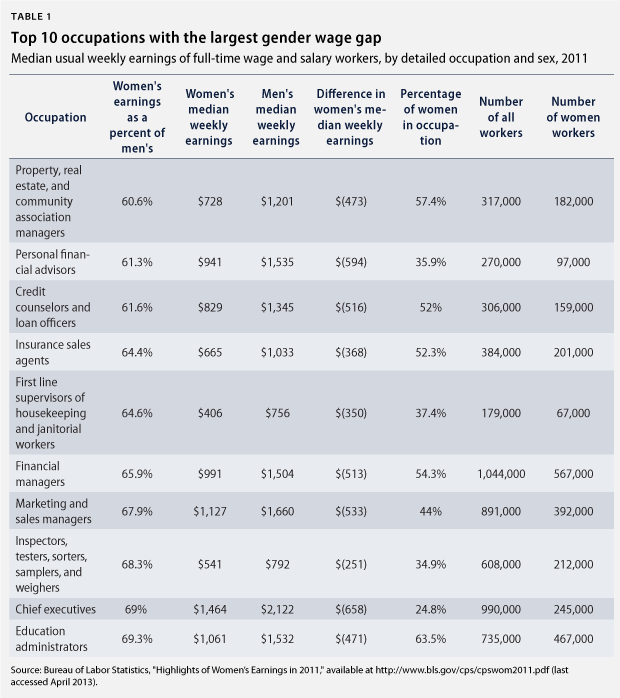Washington, D.C. — To mark this year’s Equal Pay Day and push for progress toward pay equity, the Center for American Progress released new resources that unpack the complicated story behind why the gender wage gap persists. Reports reveal the top 10 occupations with the largest and smallest gender wage gaps and outline the way pay inequity impacts women and families across the country.
“The gender wage gap has not budged in recent years and continues to have a significant impact on the economic security of women and their families,” said Sarah Jane Glynn, a Senior Policy Analyst with the Center for American Progress. “Arguing that the wage gap is the result of the ‘choices’ women make completely ignores the structural factors that influence our lives—we can still legally be fired for discussing our salaries with co-workers, and even full-time working women still do more housework and provide more child care than their partners. Legislative action such as the Paycheck Fairness Act, while not a panacea, is an important step toward equality.”
While the 23-cent gender wage gap is often dismissed as just a byproduct of the choices women make, in “What Causes the Gender Wage Gap?,” CAP’s experts Glynn and Jane Farrell write that decades of evidence reveal that the gender wage gap is about much more than just personal choices. They show that among men and women employed full time, only 60 percent of the wage gap can be attributed to known factors such as work experience, union status, and the aforementioned choice of occupation, among other measurable differences.
The gender wage gap, of course, also varies by occupation, and another quarter of the gap is attributable to these differences in wages paid by industries that employ mostly men or mostly women. In “The Gender Wage Gap Differs by Occupation,” Glynn shows how the top 10 occupations with the largest and smallest gender wage gaps compare.

But what causes the remaining gap of more than 10 cents on the dollar—or $4,465 per year among workers making the median wage—between men and women? This is less clear but perhaps more troubling. More than 40 percent of the gender wage gap is “unexplained,” meaning that there is no obvious measurable reason for a difference in pay. This leaves us with possible explanations that range from overt sexism to unintentional gender-based discrimination to reluctance among women to negotiate for higher pay.
The evidence suggests that the wage gap cannot be attributed to just one factor, and multiple strategies will be needed to eradicate it. The Lilly Ledbetter Fair Pay Act was an important first step but more needs to be done. Passing the Paycheck Fairness Act would prevent employers from firing workers who voluntarily talk about their salaries with co-workers, sanction employers who illegally commit wage discrimination, and provide funds for negotiation training for women and girls. It is also necessary to establish a National Equal Pay Enforcement Task Force that would bring together the Equal Employment Opportunity Commission, the Department of Justice, the Department of Labor, and the Office of Personnel Management to address barriers to pay equity and recommend steps that could be taken to address the issue.
Read “What Causes the Gender Wage Gap?” by Jane Farrell and Sarah Jane Glynn
Read “The Gender Wage Gap Differs by Occupation” by Nancy Wu and Sarah Jane Glynn
Related resources:
###